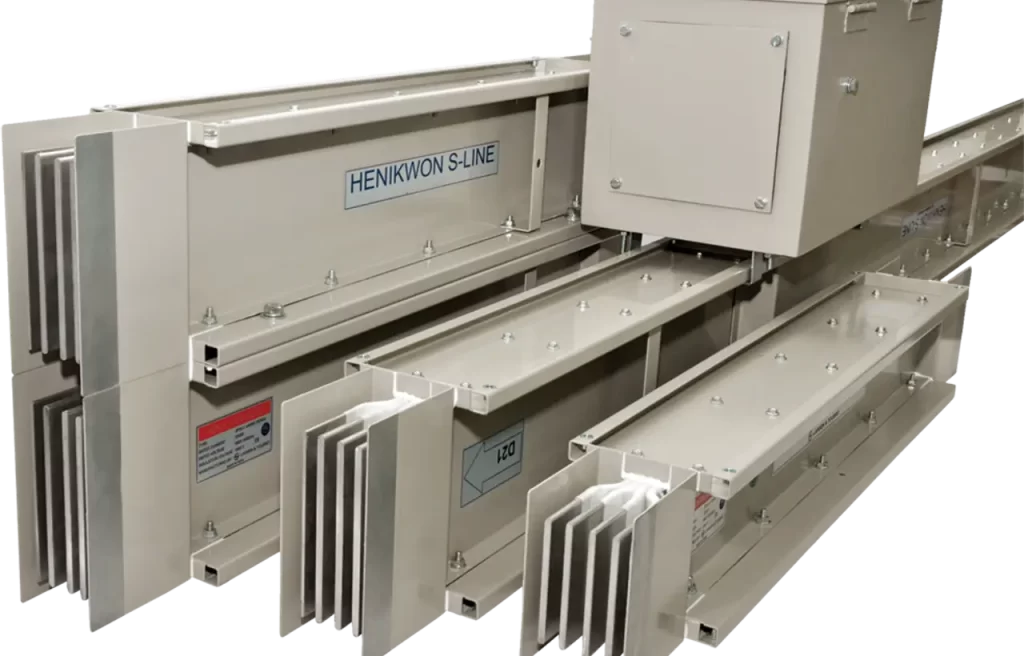What Type of Busbar Trunking System Does Your Business Really Need?
What Type of Busbar Trunking System Does Your Business Really Need?
Blog Article
In the rapidly evolving industrial and commercial sectors, choosing the right power distribution system is crucial to operational efficiency and long-term reliability. One of the most vital components in modern electrical infrastructure is the busbar trunking system. But with so many options available, how do you determine what type of busbar trunking system your business really needs?

Understanding your power needs, safety requirements, and scalability is essential when selecting a busbar system that can meet your operational goals. In this blog, we’ll break down the key types of busbar trunking systems and help you identify which one is the best fit for your specific business environment.
Understanding Busbar Trunking Systems
A busbar trunking system is a method of distributing electricity using copper or aluminum busbars enclosed in a protective casing. It replaces traditional cable systems and offers a more efficient and reliable alternative for transmitting high and low-voltage power in buildings, factories, and industrial facilities.
Why Choosing the Right System Matters
Selecting the wrong system can lead to energy losses, overheating, maintenance challenges, and higher operational costs. On the other hand, the right system supports load balancing, system expansion, and safe operation—making it a long-term asset rather than a liability.
For businesses aiming for quality, opting for expert Busbar Trunking System Installation Service in India is essential for optimal performance and safety compliance.
Types of Busbar Trunking Systems
Depending on your voltage, current rating, application, and space requirements, here are the major types of busbar trunking systems to consider:
1. Lighting Busbar Trunking Systems
Ideal for commercial buildings, warehouses, and retail spaces, these systems are designed for lower power loads (usually up to 40A). They are compact and allow easy repositioning of lighting fixtures without rewiring, making them perfect for flexible interior setups.
2. Low Power Distribution Busbars (Up to 100A)
These systems are suitable for small industrial setups, commercial floors, or office buildings where moderate power loads are expected. They support frequent tap-offs and ensure neat and organized power distribution without cluttering the ceiling or walls with wires.
3. Medium Power Distribution Busbars (100A to 800A)
This category is typically used in data centers, small factories, and commercial complexes. It strikes a balance between efficiency, cost, and scalability. Medium power systems are often modular, allowing for easy extensions and upgrades.
4. High Power Distribution Busbars (Above 800A)
For large-scale manufacturing plants, industrial production units, or logistics hubs that require heavy machinery and high electrical loads, high power busbar trunking systems are essential. They are built to handle intensive use, offer superior thermal performance, and are built with robust insulation to withstand demanding environments.
5. Feeder Busbars
Feeder busbars are mainly used to transmit electrical power from transformers to the main distribution boards or between large power centers. They are ideal for facilities that need reliable long-distance power delivery.
6. Riser Busbars
Common in multi-story buildings, riser busbars are vertically installed to distribute power across different floors. They’re widely used in hotels, office towers, and hospitals. Their design simplifies installation and ensures consistency across floors.
Factors to Consider Before Making a Choice
When selecting a busbar trunking system for your business, here are the key parameters to evaluate:
Load Requirements Calculate your current and future power demands.
Space ConstraintsSome systems are more compact than others.
Safety Standards Ensure compliance with local and international standards.
Flexibility and Scalability the system grow with your business?
Environmental Conditions Consider temperature, humidity, and exposure to corrosive substances.
Installation and Maintenance Ease of installation and access to skilled service providers is crucial.
Choosing a system that checks all these boxes is easier with support from a Top Electrical Solution Company in Rajasthan that understands both technical specifications and practical constraints.
Why Expert Installation Matters
Even the best busbar system can underperform if not installed correctly. Proper alignment, secure joints, and certified components ensure the system can carry rated currents safely over its lifetime. That’s why businesses across sectors rely on Manikaran Enterprises for professional and standards-compliant busbar trunking system installations.
Future-Proofing Your Power Infrastructure
One major advantage of modern busbar systems is the ability to upgrade or reconfigure them with minimal downtime. Whether you’re scaling your manufacturing unit, adding new floors to your building, or integrating automation systems, having a flexible and reliable power backbone makes all the difference.
Conclusion
The type of busbar trunking system your business needs depends on your operational scale, environmental conditions, and long-term growth plans. From lighting busbars for retail outlets to high-power systems for industrial giants, there's a solution for every application.
Investing in a well-matched system and choosing reliable installation services from experienced providers like Manikaran Enterprises ensures not just immediate performance but also long-term cost efficiency and safety.
If you’re unsure about the best system for your needs, consult industry experts and opt for tailored solutions that align with your business goals. Report this page